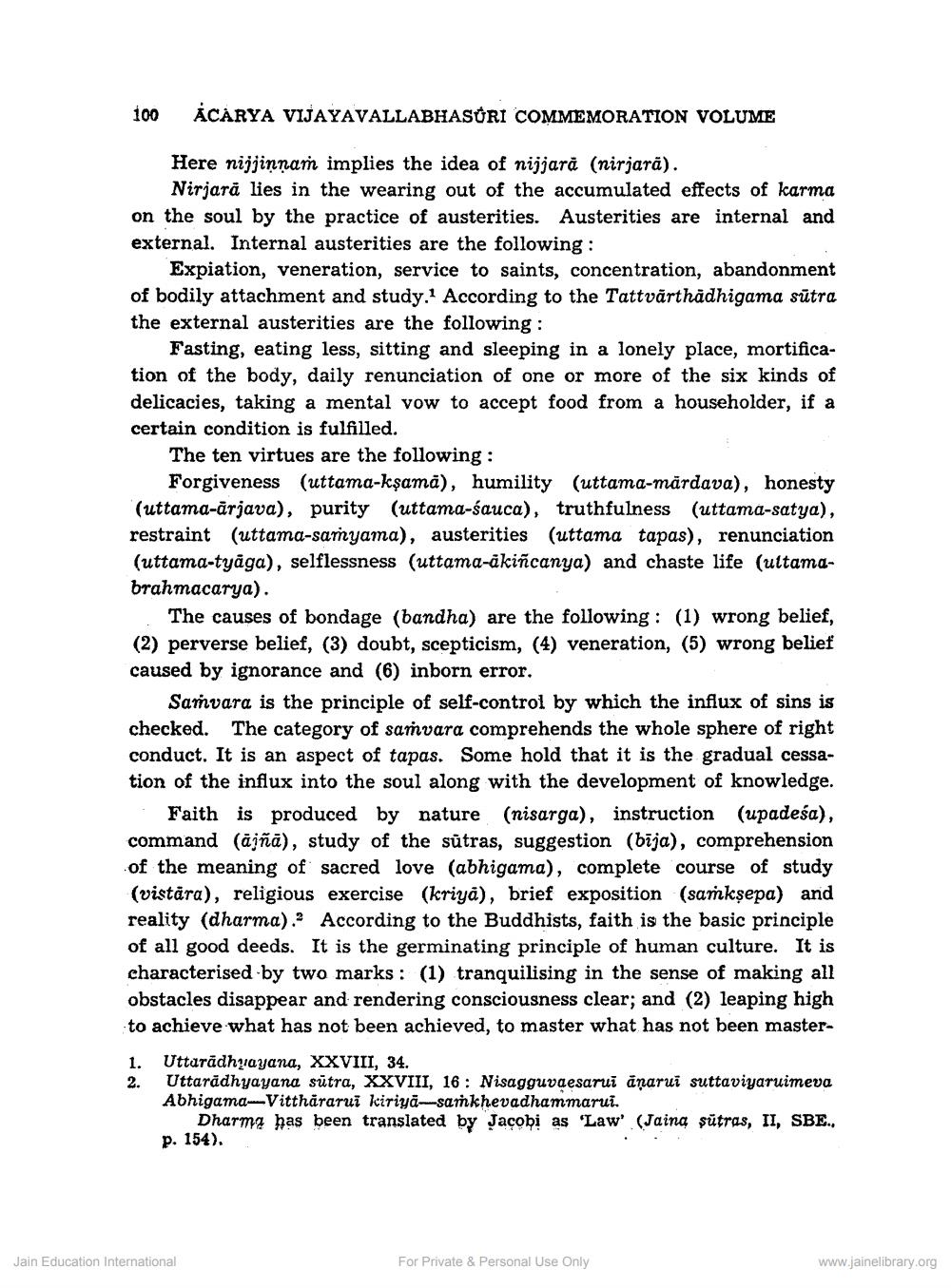________________
100
ACARYA VIJAYAVALLABHASÚRI COMMEMORATION VOLUME
Here nijjinnam implies the idea of nijjară (nirjarā).
Nirjară lies in the wearing out of the accumulated effects of karma on the soul by the practice of austerities. Austerities are internal and external. Internal austerities are the following:
Expiation, veneration, service to saints, concentration, abandonment of bodily attachment and study. According to the Tattvārthadhigama sutra the external austerities are the following:
Fasting, eating less, sitting and sleeping in a lonely place, mortification of the body, daily renunciation of one or more of the six kinds of delicacies, taking a mental vow to accept food from a householder, if a certain condition is fulfilled.
The ten virtues are the following:
Forgiveness (uttama-kşamă), humility (uttama-märdava), honesty (uttama-árjava), purity (uttama-sauca), truthfulness (uttama-satya), restraint (uttama-samyama), austerities (uttama tapas), renunciation
(uttama-tyaga), selflessness (uttama-akiñcanya) and chaste life (uttamabrahmacarya).
The causes of bondage (bandha) are the following: (1) wrong belief, (2) perverse belief, (3) doubt, scepticism, (4) veneration, (5) wrong belief caused by ignorance and (6) inborn error.
Samvara is the principle of self-control by which the influx of sins is checked. The category of samvara comprehends the whole sphere of right conduct. It is an aspect of tapas. Some hold that it is the gradual cessation of the influx into the soul along with the development of knowledge.
Faith is produced by nature (nisarga), instruction (upadeśa), command (ājñā), study of the sūtras, suggestion (bīja), comprehension of the meaning of sacred love (abhigama), complete course of study (vistāra), religious exercise (kriya), brief exposition (samkşepa) and reality (dharma). According to the Buddhists, faith is the basic principle of all good deeds. It is the germinating principle of human culture. It is characterised by two marks: (1) tranquilising in the sense of making all obstacles disappear and rendering consciousness clear; and (2) leaping high to achieve what has not been achieved, to master what has not been master
1. 2.
Uttaradhyayana, XXVIII, 34. Uttaradhyayana sūtra, XXVIII, 16: Nisagguvaesarui anarui suttaviyaruimeva Abhigama-Vitthärarui kiriya-samkhevadhammarui.
Dharma has been translated by Jacobi as 'Law (Jaing sutras, II, SBE.. p. 154),
Jain Education International
For Private & Personal Use Only
www.jainelibrary.org




